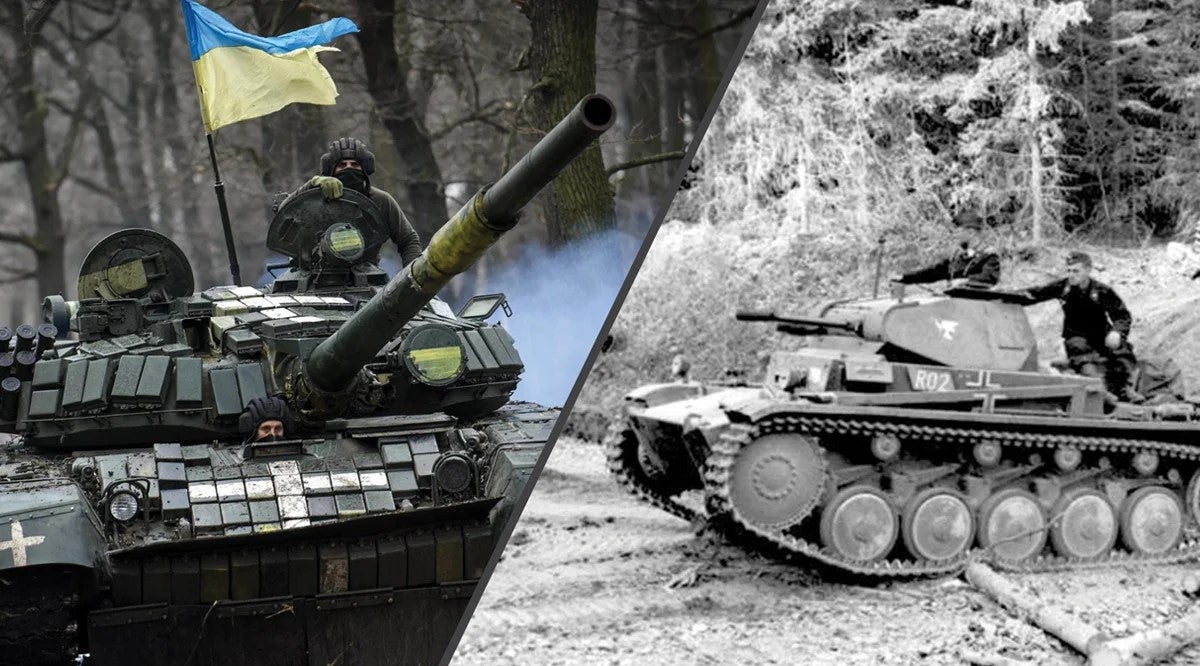Novelty, Adaptation Needed in Lethal Future Fight
Novelty, Adaptation Needed in Lethal Future Fight

As the Army modernizes for large-scale combat operations, an examination of the war in Ukraine and the 1940 Battle of France could provide insights for penetrating organized defenses in an era of high technology, writes the author of a new paper.
Lt. Col. Nathan Jennings, an Army strategist and associate professor at the U.S. Army Command and General Staff College, writes that the Germans achieved victory against French and British forces in 1940 with a combination of “intentional, incidental and accidental asymmetries that allowed them to penetrate and exploit the most imposing defensive construct of their era.”
As such, U.S.-led coalitions will have to “apply similar degrees of novelty and adaptation to negotiate the lethality of the current military environment,” one where swarming drones, relentless surveillance and precision strikes are “wreaking havoc on combined arms offensives,” Jennings writes in “Maneuver and Breakthrough in 1940 France: Insights for the U.S. Army and the Russo-Ukrainian War,” published by the Association of the U.S. Army as part of its Land Warfare series.
For every successful Battle of France, which saw a unique set of asymmetric advantages within fleeting military and political conditions, there are numerous examples—exemplified by the “tank graveyards” of Zaporizhzhia and Avdiivka in Ukraine—where large-scale ground assaults shattered themselves against defenses primed with fortifications, counterattacks and integrated fires, Jennings writes.
In the effort to develop a force that is optimized for combat at scale, as opposed to the brigade-centric order of battle that fought in Iraq and Afghanistan, Jennings writes, the Army is developing divisions capable of multidomain operations “to serve as the primary unit of action and to provide senior commands with potential to execute among the most challenging of combat actions: operational penetration with intent to inflict systemic disruption or even collapse across rear areas.”
For the Germans, in addition to novel combined arms restructuring, the Wehrmacht’s prioritization of tactical ground mobility, dedicated air interdiction, tailored sustainment, integrated operational design, credible military deception and a nested operational approach allowed them to attain fleeting and decisive advantage over the French and British defenders, Jennings writes.
Pointing to the Army’s own vision for transformation, which states that the institution must modernize to “prevail from competition through conflict with a calibrated force posture of multi-domain capabilities” that “provide overmatch through speed and range at the point of need,” Jennings notes that the service must be “prepared to innovate with new manifestations of maneuver warfare that will allow it to avoid, or negate, the attritional and positional trends that have caused frustration and exhaustion across the steppes of Ukraine.”
Read the paper here.
It is an updated version, incorporating lessons and observations from the war in Ukraine, of a paper published in April 2022. The original paper is available here.

